Air or pole tents - before shelling out on your next camping shelter, make sure you read our expert guide to the pros and cons of both types
Should you choose an inflatable air beam tent or a tent with poles? We put both tent varieties to the test so you can choose the right one for you

A new tent is a considerable investment for any camper, whether you're heading for the wilds of the backcountry, or a commercial campsite with every amenity under the sun. But if you're not sure whether you should buy an air beam tent or a tent with poles, you need the answer a few questions to help you choose. And let's face it, you may also be asking whether air tents are any good.
It's 14 years since the Scottish brand Vango introduced the concept of inflatable air pole tents to the outdoors world. In 2011, they introduced the first AirBeam tent and, since then, many brands have jumped on the inflatable bandwagon. Now, there is a wide range of air tents to buy, including some in our review of the best camping tents.
We asked our camping expert to test out two equivalent models to find out if air tents arebetter than pole tents. On test are the Osiris Air from Vango's Earth Collection vs a more traditional pole tent, the Aether 450 XL. Here's what he found out...
Meet the tester
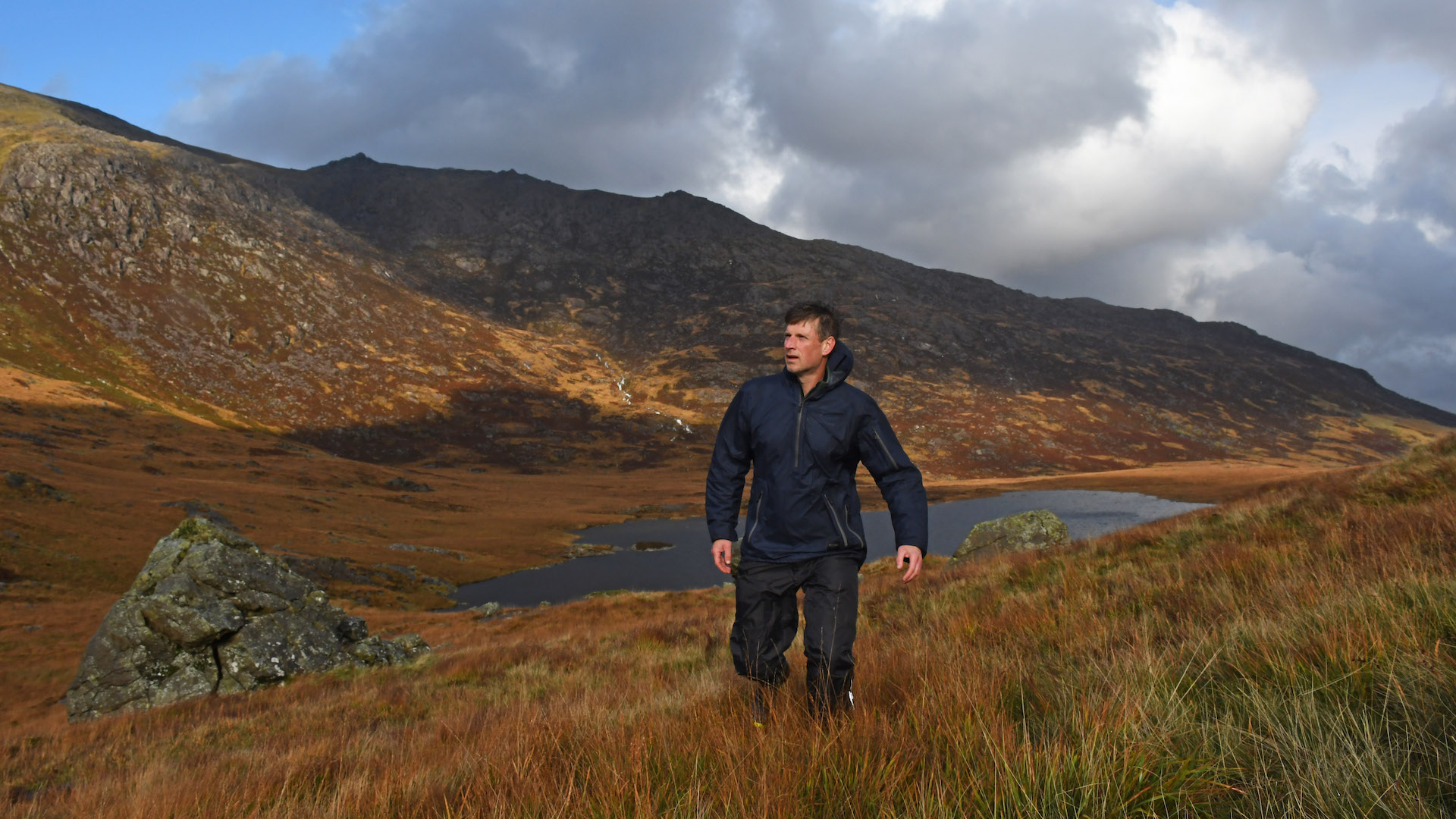
Writer, editor and enthusiast of anything involving pegs, pitching, boots, backpacks and bruises, Pat has spent 20 years pursuing adventure stories. His love of camping has seen him enjoy backpacking trips on multiple continents, as well as the occasional camping holiday with his family.
Pitching pole tent vs air tent
- The Aether 450 is straightforward to pitch but best with two people
- The Osiris Air 500 has the edge as it can be pitched by one person
When considering how to pitch a tent, it's fair to say that most modern pole tents are quite easy to put up. The majority of the larger models are based around a tunnel design and there is usually a good color-coded pole-to-sleeve scheme.
To pitch, you simply thread several large poles through the sheaths or sleeves on the inner part of the tent, then bend them and put each end in an eyelet or similar at ground level.
This is how the Aether 450 works, and it’s all fairly straightforward, although it’s definitely a bonus to have at least two people involved.
However, many people will find it's even easier to pitch a well-designed air tent, such as the Osiris Air 500. You simply peg out the the base of the tent, attach the hose to the valve on the airbeam and pump.
All the latest inspiration, tips and guides to help you plan your next Advnture!
The airbeams form wide tubes, which are integrated into the design of the inner tent, and when fully inflated act exactly like poles. Once fully inflated the air 'poles' become rigid and form a strong tent structure.
It’s really simple and with a good pump, such as the one included with the Osiris Air, the beams can be fully inflated in about a minute.
The huge advantage is that a large family tent that can be erected easily by one person, while the rest of your group can organise other camping equipment, such as sleeping pads, sleeping bags and cooking gear, or go off to investigate the camp ground.
For this reason, the air tent gets the win for ease of pitching.
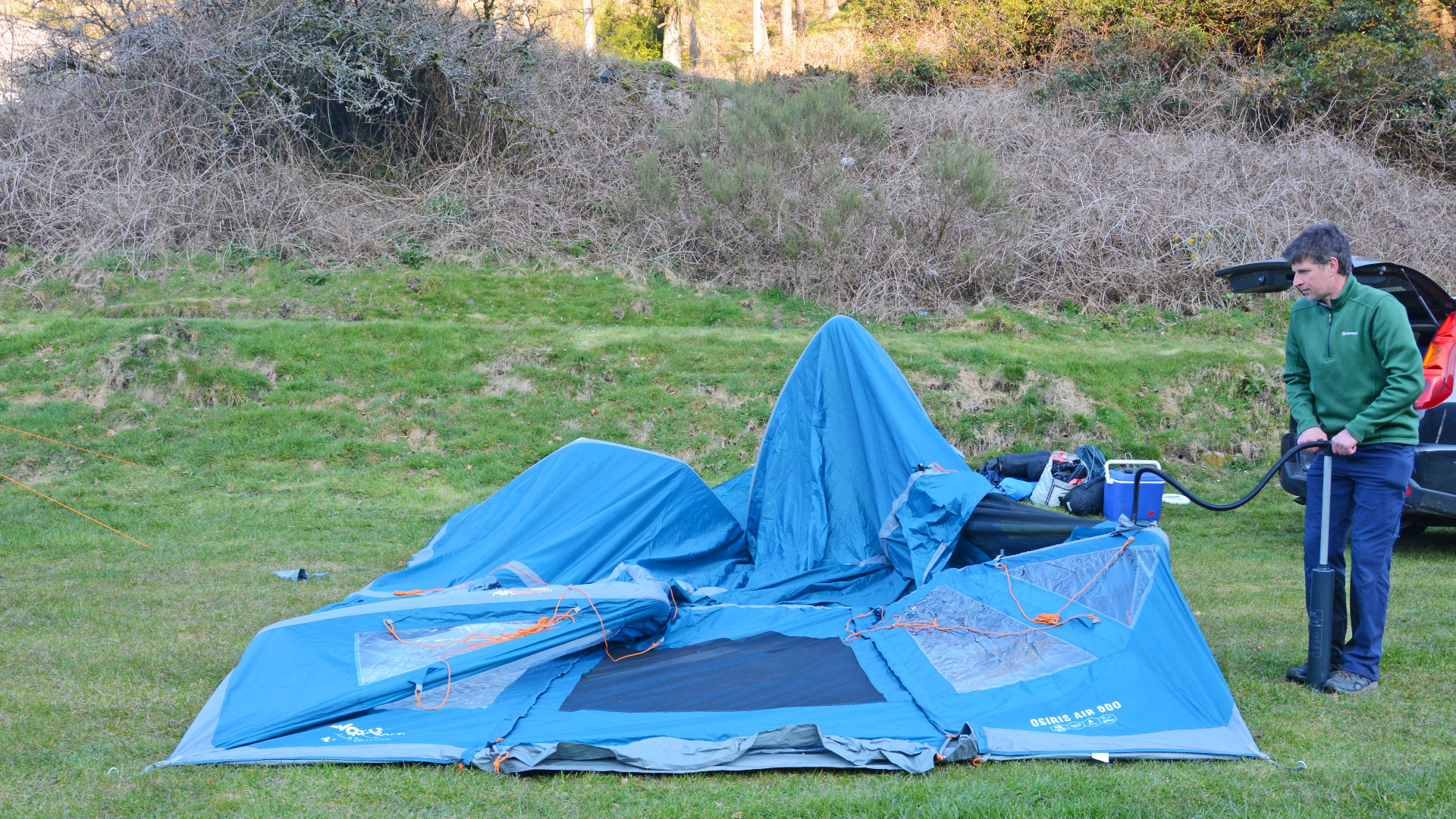
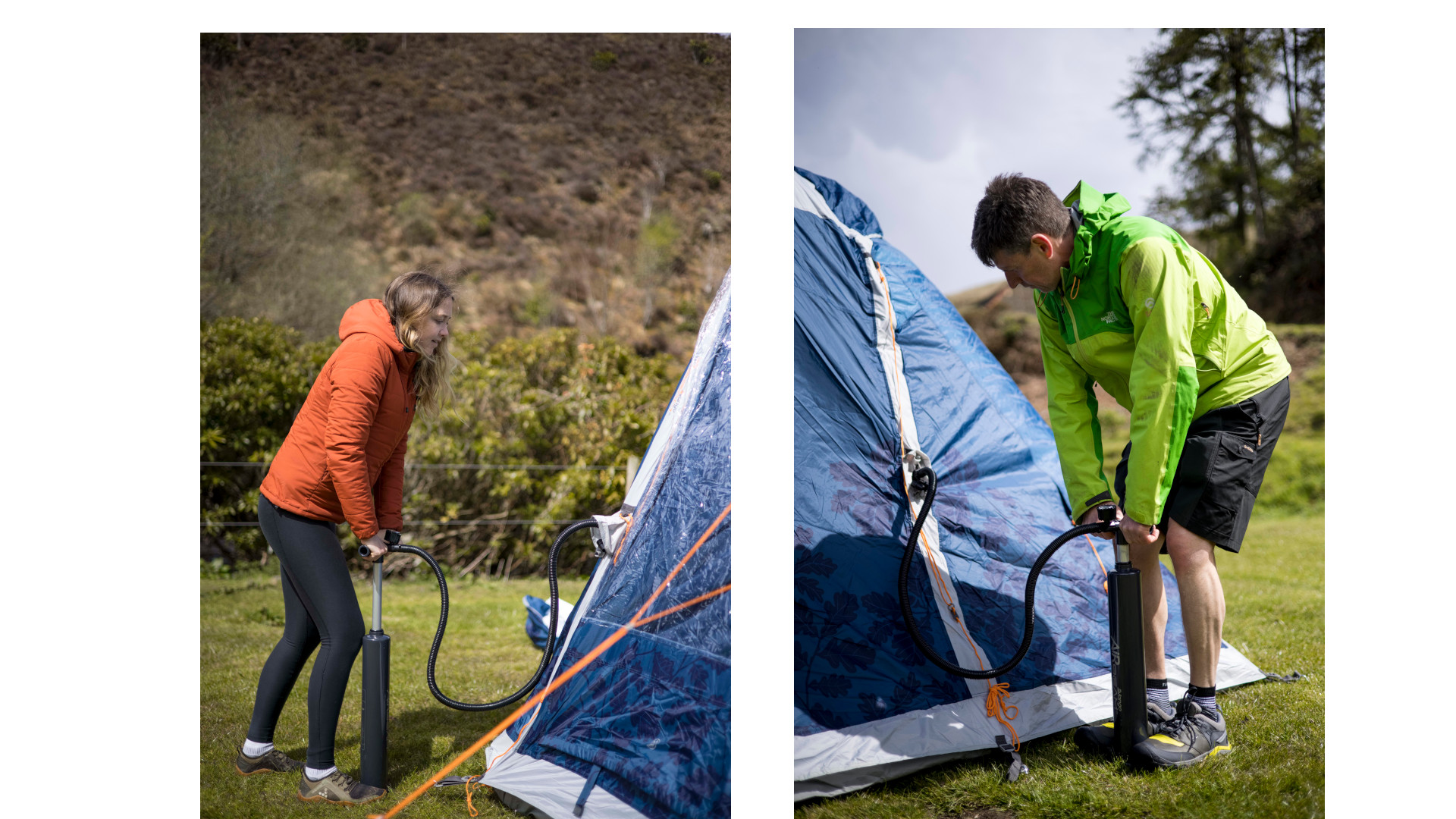
Tent design, stability and adverse weather
- Different tents provide different levels of comfort and liveability
- Both air tents and poled tents cope well in windy conditions
- Air tents need internal bracing straps, which impacts internal space
- Inflatable beams can bend in strong winds, but they will not snap
Family-sized tents are usually great for offering lots of space. Each tent will have different advantages, such as bedroom and living area layout. You should be able to stand up inside a family tent, too. All of these features will be generally the same for air tents and pole tents.
To decide what tent details are important to you, check out how to choose a tent and what size tent do I need?
Other design details to look at are the need for guy ropes. Family tents, both air and pole, are generally large and tall, whether they have a tunnel or a geodesic (half dome) shape, and this means they rely on a lot of tensioning at either end to stay up.
Our tester discovered that during a wild and windy weekend, the Osiris Air 500 performed just as well as the Aether 450 pole tent, not least because it has internal bracing straps – one of the parts of a tent many won't be familiar with – that help it maintain its shape even in gusty conditions. The straps do encroach on internal space, but they are optional, and don’t need to stay in place when conditions are more benign. In calmer weather, you'll have more space for kit like camping chairs.
It's worth noting that tent performance will vary from brand to brand and different designs and models. For example, not all air tents are equipped with bracing straps, which means they are more prone to bending in the wind. However, while they may bend, inflated tubes won't snap, so that’s one thing less to worry about.
Overall, we're calling a draw score for both tents on design and stability.
Take down air tent vs pole tent
- Air tents can pose a challenge when trying to fit back into carry bag
The least fun part of any camping trip is taking down the tent and packing it away. Family sized tents are often tough to roll up and squeeze back into the carry bag provided. Sometimes, you wonder if the tent was ever packed into such a small bag in the first place because the battle can be all too real.
The Osiris Air 500 comes has the advantage of a pump with a deflate setting. To stand any chance of getting the tent into its bag, you really need to make use of this function. Even so, our tester found the air tent to be marginally more difficult to wrestle into the carry bag, compared to the pole tent.
When considering whether air tents are any good, you should think about the challenge at the end of your camping trip but on this point, pole tents win over air tents.
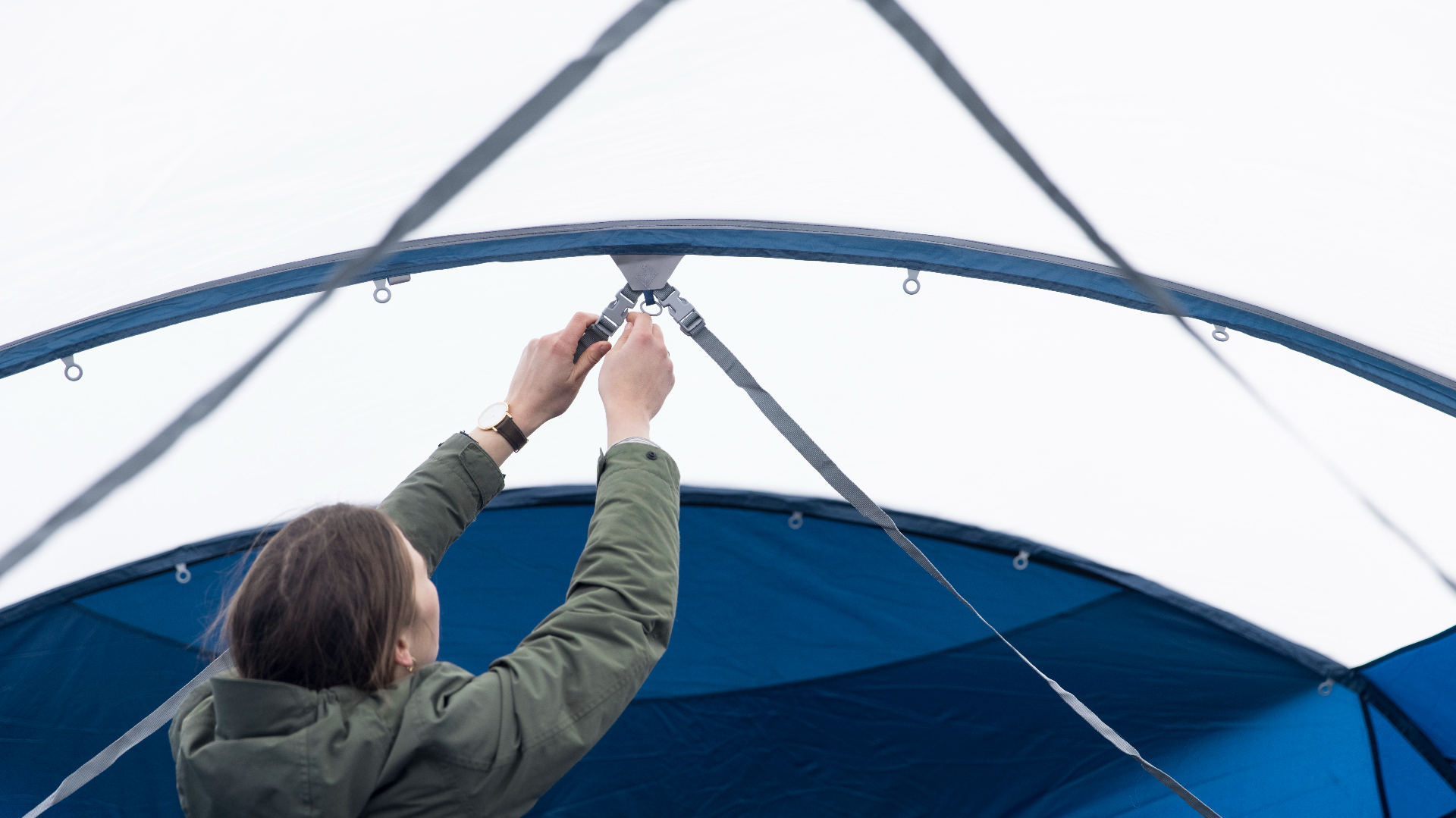
Air tents vs pole tents: durability, repair and maintenance
- Air tubes can be replaced if punctured
- Duct tape can a useful temporary solution for punctured air tents
- Poles may be liable to snapping when put under stress
- No significant difference overall in terms of durability
As noted above, while an air tent may well move around a bit more in high winds, at least the beams won’t snap – which can be a problem with pole tents, either in extreme conditions or as a result of an accident (reversing your car over them), or incorrect usage.
That said, you can suffer a puncture to an airbeam. While this is very rare, due to the heavy duty materials used on the tubes, it’s not unheard of. Thankfully, this does not mean the entire tent is rendered useless forever.
Just as with a broken pole, duct tape (the unsung hero of every camping trip) can be used to do temporary tent repairs, plus tubes can be replaced. The one thing you don’t want to break (or forget) is the pump…
In every other respect – in terms of robustness of fly and ground sheet, zips, mesh etc – there is no big difference between air and pole tents.
This means it's another draw with air tents vs pole tents.
Transportation: are air tents better than pole tents?
- No significant difference between weight and volume
- Air tents tend to come in larger packs and the pump can be bulky
The size of the packed tent needs to be considered when packing your vehicle for your camping adventure – and then getting the tent to the camping spot. . Family tents are usually large and some can be bulky and heavy when packed in their carry bag.
The Aether 450 weighs 44kg (20kg) and, when packed away, the carry bag’s dimensions are 28 x 12 x 12.5in (72 x 30 x 32cm), which is a relatively compact but dense and heavy pack to carry around. The air version of this tent weighs in at 46.5lb (21.1kg) and the pack size is 29 x 16.5 x 16.5in (73 x 42 x 42cm).
The Osiris Air 500 is a lighter 33.7lb (15.3kg), but has a larger pack size of 28.7 x 13 x 13in (73 x 34 x 34cm). The pole version of this model has the same stats.
All in all, there isn’t a huge difference between the weight and volume of the two styles of tent, but air tents do tend to come in slightly bigger bags to allow you to get them back in once you drop them (see ‘take down’ in this guide to pitching a tent). You also need to fit in the pump, which adds a bit of bulk.
Comparing family sized air tents and pole tents, it's a marginal win on transportation for the pole tent.
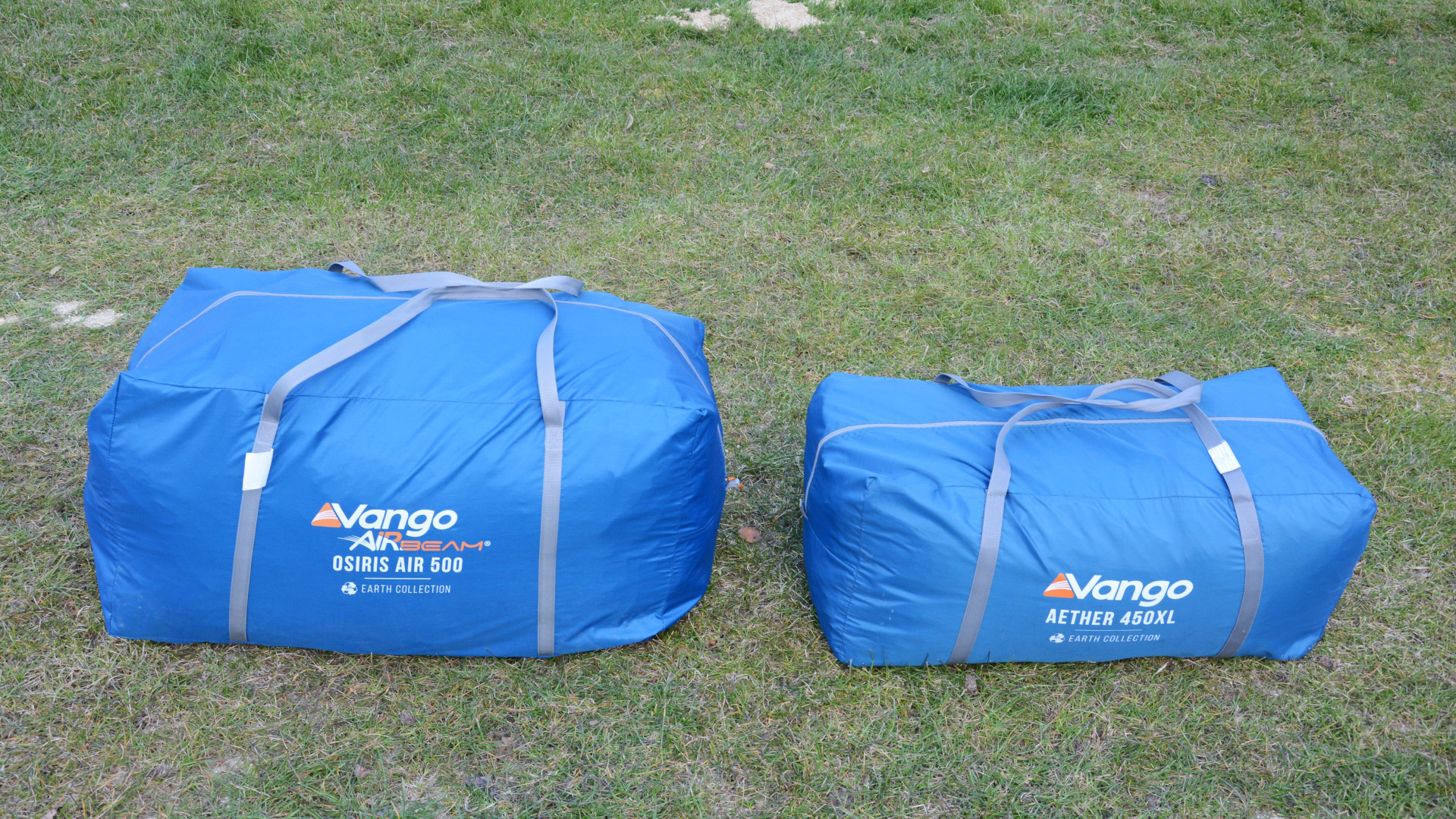
Price
- Pole tents are often cheaper than air tents
There is a bit of daylight between the two styles in this category and pole tents are usually cheaper than their inflatable siblings. For example, the air version of both the Aether 450XL and the Osiris 500 is about 20% more expensive than the pole version of the same tent.
That means, pole tents win if budget is your main consideration.
Air tents vs pole tents: the verdict
What was the result: air vs pole tents? On the plus side, we love the ease of pitching an air tent. It can even be pitched by one person on their own. Taking the air tent down is just as easy, although it can be a struggle to get it into its bag.
Then again, when it comes to budgets, a pole tent might be the best choice, because traditional poles tents are usually cheaper than a similar inflatable tent.
When it comes to performance, they both score fairly equally.
| Row 0 - Cell 0 | Air tent | Pole tent |
Pitching | Very easy to pitch and can be done by one person | Straightforward but best with two people, especially for larger models |
Design and stability | Beams will not snap in adverse conditions, although internal bracing straps, which impede internal space, are required in strong winds | Performs well in adverse conditions, but there's always the danger of a pole snapping |
Take down | Deflates quickly, so it's faster to pack up, but it's often more difficult to stuff into a carry bag | More faff with the poles but goes into its carry bag nicely |
Durability, repair and maintenance | Air tubes can be replaced if punctured, while duct tape provides a temporary solution | Poles can snap under duress |
Transportation | Air tents tend to come in larger packs and with a relatively bulky pump, although there's no real difference in terms of weight | Pole tents tend to come in smaller packs |
Price | Air tents are generally more expensive | Pole tents are usually cheaper |

Author of Caving, Canyoning, Coasteering…, a recently released book about all kinds of outdoor adventures around Britain, Pat has spent 20 years pursuing stories involving boots, bikes, boats, beers and bruises. En route he’s canoed Canada’s Yukon River, climbed Mont Blanc and Kilimanjaro, skied and mountain biked through the Norwegian Alps, run an ultra across the roof of Mauritius, and set short-lived records for trail-running Australia’s highest peaks and New Zealand’s Great Walks. He’s authored walking guides to Devon and Dorset, and once wrote a whole book about Toilets for Lonely Planet. Follow Pat’s escapades on Strava here and Instagram here.
